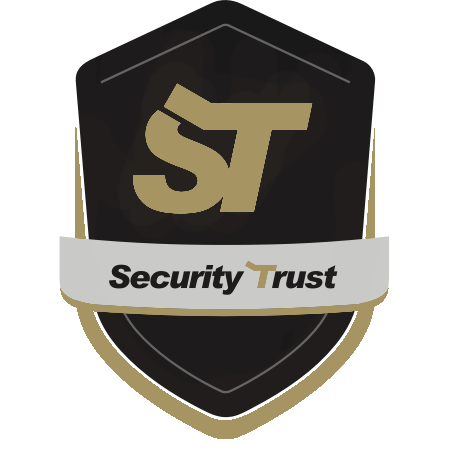Integrated Safety Systems for Banks
Bank counters, cash dispensers, data processing centres, cash deposit and money transport in the financial sector require continuous control and protection.
The data processing centres at the heart of all bank transactions are a potential target of material and virtual attacks. Therefore safety and surveillance systems must be reliable and certified in order to protect the data. Bank branches must guarantee customer service. This includes safeguarding clients as well as employees and operations. IT safety must also be guaranteed.
The number of cash dispensers keeps growing all over the world. They do not only dispense cash, but supply an ever increasing number of bank services.

Anti-Intrusion Systems for Banks
Design, planning, installation, putting into service and maintenance of the anti-intrusion and anti-theft alarm systems in compliance with the relevant CEI 79-3 and CEI EN 50131-1 Standards are necessary to create a safety system.
Before designing a system, possible threats and risks are analyzed. The costs of possible thefts and damage as well as the location of the real estate, the presence of controlling workforces and the history of previous thefts or threats are taken into consideration.
Protection aims at guaranteeing maximum safety in all internal and external areas as well as in the work chain transport areas, such as the following:
- Perimeters
- Entrances and exits with booths and automated gates;
- Loading platforms
- Counting areas, quality control and packaging areas provided with metal detectors
- Vaults
- Armoured cars
- Customer reserved area
Protection is provided not only at access points such as doors and windows, but also on the perimeter walls which are provided with breakthrough detection systems and scanner radars sensors based on the measurement of the flight time in order to protect glass partitions.
For rooms requiring a higher degree of safety, such as DPCs, servers and safes, ad-hoc multi-technology systems with smoke dischargers preventing thieves from completing their theft and from damaging the building are used.
Video Surveillance Services for Bank Safety
Pursuant to the CEI EN 62676 Standard, before designing an industrial video surveillance system we carry out an analysis of the specific requirements of the site and identify which areas require not only visual monitoring limited to the storage of images, but also active filming and detecting of incidents by means of the following:
- intelligent video analysis of images by means of “left object” algorithms for detecting objects left unattended inside virtual areas beyond a fixed time limit (anti-terrorism), “ATM systems” for detecting persons staying in the cash dispenser area beyond a fixed time limit, “Skimmer Detection” system for detecting the smallest contour position change inside an ATM area or persons staying in a certain area beyond a fixed time limit (anti-fraud system), “stolen object” system for detecting removed objects, “loitering” systems for detecting suspect persons staying in virtual areas beyond a certain time limit, “counting” system for counting and aggregating the number of subjects of interest crossing virtual lines in a certain direction.
- Anti-masking functions for detecting hooded persons and blocking the access of possibly ill-intentioned persons to the booths.
- Biometric “face detection” recognition systems for accessing particularly critical rooms such as vaults, server rooms, etc.
- Tracking the object of interest by means of an auto-tracking function.
- Open platform. This can be integrated with other systems present within the structure or used as a centralized system.
Access and Presence Detection Systems for Banks
Banks and other financial institution generally have a dense network of branches with centralized management. During opening hours it is very important to coordinate customer flow. An intelligent digital system guarantees cost-effectiveness, comfort and safety.
Banks have high safety requirements for closing systems and access control. The actual protection of sensitive customer information is crucial.
This means that solutions must be both effective and flexible in order, for example, to rapidly reflect the changes in function of employees or to quickly withdraw the right of access to employees who have resigned.
Depending on the type of building, booths, automated gates and tripod turnstiles for controlling access with the RFID identification system are provided at main entrances.
An access control system has the following advantages and purposes:

- higher safety level against internal/external/visitor’s attacks: internal and external areas are compartmentalized and gate access levels are assigned depending on the title, day, time band etc.
- More flexible access through the use of new identification technologies and access by smart-phone using BLE, NFC and QR codes.
- The use of biometric systems for particularly critical rooms in compliance with the ISO/IESC 19794-5 (ICAO) AND Standards, with Mifare badge reading system, improve the level of safety and reliability of the system. Multi-site centralized management using platforms whose number may be increased (number of users and terminals) depending on the corporate requirements without any impact on system operation.
- Dematerialization: the documentation concerning privacy and safety measures may be viewed without using paper. Tablets are used for the graphometric signature;
- Increased safety: calculation of the number of people in charge of first aid, fire fighting. Control of safety data in the case of access of external teams to any building site.
- Vehicle transit control by means of registration number reading systems, UHF electronic toll collectionand APP-BLE systems as well as to control pedestrian access. This function applies to all types of persons having access to the site (employees, external companies, visitors).
- Detection of the presence of employees when processing payrolls by means of dedicated terminals for clock in and clock out reading. As an alternative, it is possible to use access control terminals and interface them with pre-existing systems used for processing payrolls.
- Management of electronic key hanging boards: authorization to collect the keys and possibility to return them directly through the access control system. The objective of this process is being able to trace the keys and preventing those who have not returned them from leaving.
- Retrospective tracking of incidents for security and statistic purposes.
- Collection and analysis of strategic information for the purpose of corporate analyses and strategies: man hours, Company division and cost centre
- Data rack access control: the use of ONLINE and Gateway Wifi wireless mechatronic solutions is particularly suitable for those who supply housing and hosting services. There is a wide range of high-safety battery locks that can be applied directly on the handles of the racks.
Fire Detection Systems for Bank Safety
Bank institutions and check-cashing places belong to those places where the risk of intrusion/robbery is higher than the risk of fire. However, the latter shall not be underestimated.
The purposes of the smoke detection system can be summarized as follows:
01detecting a possible fire outbreak in the shortest time possible
02helping in rapid evacuation and goods removal


Implementation of intervention plans 03
Implementation of protection systems against fire and further safety measures 04
The design, installation, putting into service, operational control and maintenance of smoke detection systems in the industrial sector take place in compliance with the UNI 9795, UNI EN54 and UNI 11224 Standards.
In this case, general safety measures against fire are implemented: firewalls, fire doors, installation of a suitable number of fire extinguishers, creation of a fire-fighting water system with reels and hoses depending on the risk level. Server rooms containing electronic machines and databanks are also subject to the risk of fire. In this case the solution could be smoke detection through a suction system using LASER technology: smoke particles are detected inside the air taken from the pipelines.
A switching off system with autonomous central units in compliance with the EN 12094-12003 Standard, capable of managing output activation modules and access modules for signaling failures and/or disabling rooms can be used to safeguard the contents of critical areas such as SERVER and EDP rooms.